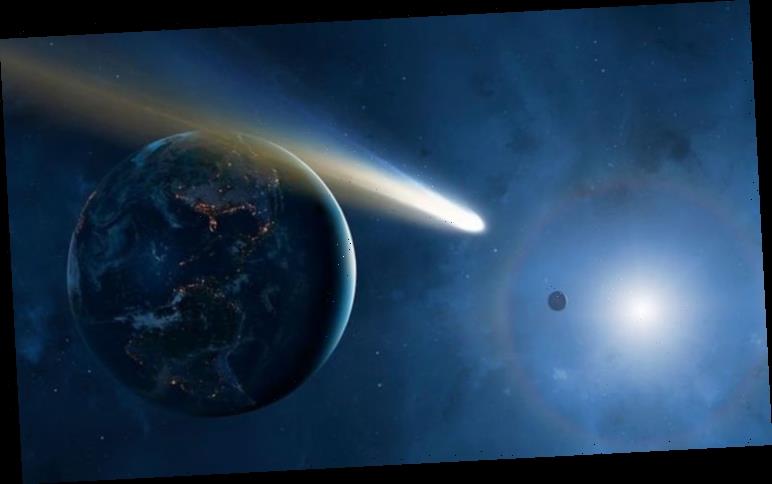Referring to the discovery of the mysterious object, which is a rare interstellar comet, astronomer Dr Michel Drahus said: “We immediately noticed the familiar coma and tail that were not seen around ‘Oumuamua’.” In 2017 the comet, called Oumamua, came into our solar system. Dr Drahus added: “This is really cool because it means that our new visitor is one of these mythical and never-before-seen ‘real’ interstellar comets.”
The infamous comet 21/Borisov, named after the scientist who discovered it, will come within 177,000 miles of Earth which is deemed as a “close approach”.
Astronomers from Poland have analysed the comet’s orbit and discovered that it has come from outside our solar system.
The Polish researchers first identified the object in September.
Astronomers Piotr Guzik and Michel Drahus of Jagiellonian University detected the comet using data codes after it was discovered by Gennadiy Borisov on August 30.
Dr Guzik said: “This code was written specifically for this purpose, and we really hoped to receive this message one day.
“We only didn’t know when.”
Mr Guzik continued: “Make of that what you will, but based on these initial characteristics, this object appears indistinguishable from the native Solar System comets.
“The comet is still emerging from the Sun’s morning glare and growing in brightness.
JUST IN: Black hole with power ‘of 100 Sun’s’ is flickering in Milky Way
“It will be observable for several months, which makes us believe that the best is yet to come.”
He added: “We can safely say that research on this body will be transformative for planetary astronomy and a milestone for astronomy in general.”
The comet is formally named “2I/Borisov” by the International Astronomical Union (IAU), but is sometimes referred to as “Comet Borisov”.
As the second observed interstellar interloper after 1I/ʻOumuamua, it was given the “2I” designation, where “I” stands for interstellar.
DON’T MISS:
Antarctica shock: How NASA was stunned by ‘unexpected creature'(news)
WATCH: Meteorites captured flaming across the sky(news)
NASA warns of asteroids ‘large enough to take Earth out’(news)
The name Borisov follows the tradition of naming comets after their discoverers.
Before final designation as 2I/Borisov, the object was referred to by other names.
The International Astronomical Union wrote in a statement about, it stated: ”The orbit is now sufficiently well known, and the object is unambiguously interstellar in origin.
It has received its final designation as the second interstellar object, 2I.”
The name Borisov honours its discoverer, Crimean amateur astronomer Gennady Borisov.
To make the determination that the comet was interstellar, scientists tracked the comet’s location long enough to confirm that it had an extremely hyperbolic orbit.
This is a wide arc that approaches from one direction and departs in another, marking it as an object just passing through our solar system.
2I/Borisov has a more hyperbolic path than any other comet scientists have studied to date, the IAU wrote.
Objects born in our solar system are trapped in elliptical orbits around the sun that resemble squished circles.
Source: Read Full Article






